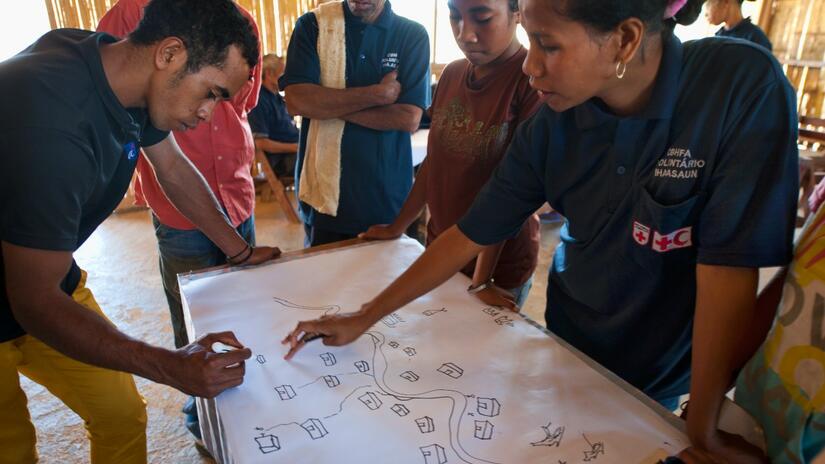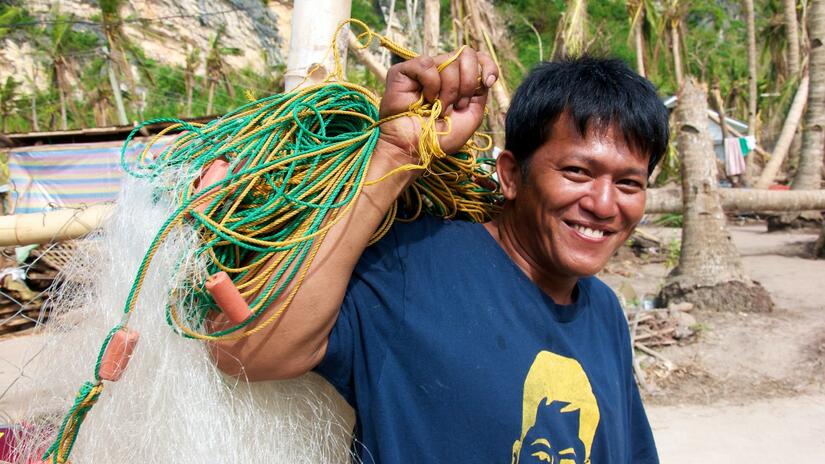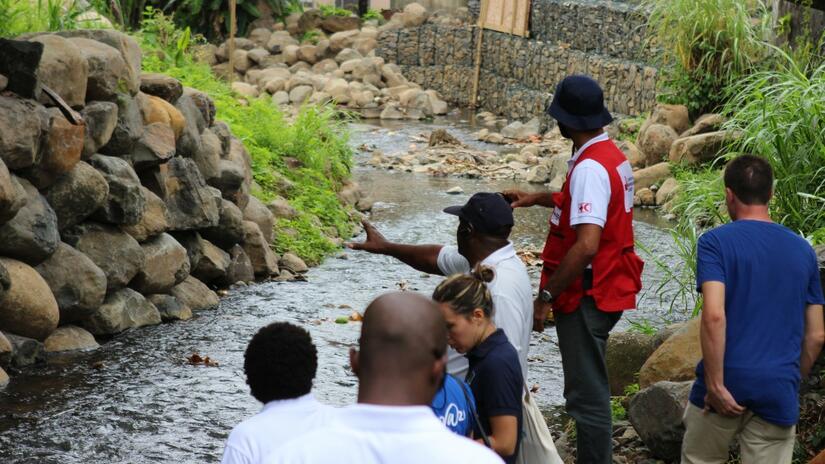Risk assessment and planning
To help effectively prepare and protect communities from hazards, we work with them to identify, understand and address the risks they face and improve their ability to take action to reduce disaster risk.
Enhanced Vulnerability and Capacity Assessment (EVCA)

Red Cross volunteers in Timor-Leste conduct a risk assessment exercise with members of a community in Lebidohe
Photo: IFRC/Victor Lacken
Through our Enhanced Vulnerability and Capacity Assessment (EVCA) approach, we support communities to understand:
- Where risks come from
- Which members of the community will be worst affected
- What resources are available to reduce these risks
- What actions they can take to prepare and reduce the risks they face
Discover step by step guidance on how National Societies can conduct participatory community risk assessments using our EVCA approach on our dedicated EVCA website.
We've also set up an online repository for National Societies and partners to share, browse and learn from each other's vulnerability and capacity assessment reports.
Road map to community resilience

A fisherman on Isla Gigantes Norte in the Philippines smiles as he holds his fishing net
Photo: Valérie Batselaere
Building community resilience is all about empowering communities to shape their lives and create a safe, healthy and prosperous future. It is a participatory process led by communities themselves—not something that can, or should, be imposed upon them.
Red Cross and Red Crescent Societies have been supporting community resilience for many decades, helping them to become safer and stronger.
Our Road Map for Community Resilience provides step-by-step guidance on how National Societies can best coordinate and adapt their work to engage with communities and help them develop resilience-building action plans. It can be used in conjunction with our Framework for Community Resilience.
Watch: Road map to community resilience
Flood resilience

Delegates from IFRC, ECHO, UNDP, St. Vincent & The Grenadines Red Cross, and French Red Cross visit a riverside community as a part of a risk reduction field visit.
Photo: IFRC/Marc Belanger
The IFRC is part of the Zurich Flood Resilience Alliance (ZFRA), an international partnership across different sectors which helps communities take practical steps to build their flood resilience. Its long-term vision is that floods will have no negative impact on the ability of people and businesses to thrive.
Find out more about the Alliance in this brochure.
Practical flood resilience tools produced by the Alliance:
- Flood Resilience Measurement for Communities: a web-based tool consisting of 44 indicators to measure how resilient communities are before and after floods.
- Post-Event Review Capability: an award-winning methodology for reviewing large-scale flood events.
Urban resilience

Manila, capital city of the Philippines, was badly affected by heavy rainfall in August 2018 that led to widespread flooding in dense urban areas as well as in neighbouring rural provinces.
Photo: IFRC/M J Evalarosa
Cities and urban areas provide important opportunities for the development of communities and nations. But risks caused by rapid and often improper urbanization, compounded by natural hazards, create some of the major challenges in the 21st Century.
Red Cross and Red Crescent Societies worldwide are working to build resilience in urban areas in light of changing and increasing risks. Read our guide to building urban resilience here.
You can also find the following urban resilience toolkits on our Global Disaster Preparedness Center website here:
- City-wide Resilience Assessment
- Building Coalitions for Urban Resilience
- Designing Solutions for Urban Community Resilience
